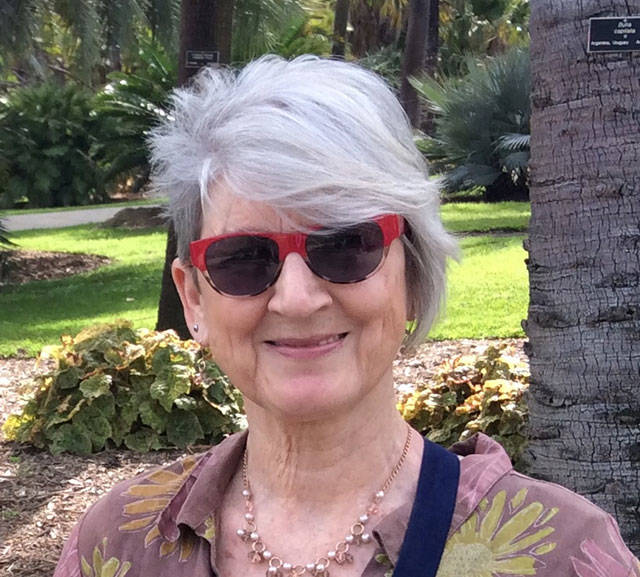I want to thank islander Douglas Larsen, who, in a recent Letter to the Editor, asked for a discussion around Critical Race Theory, or CRT (“Islanders should weigh in,” July 15). It seems to have triggered a lot of interest but also lots of fear.
I remember where I was when I learned that “race” was not a biological fact. For a minute, it wouldn’t compute. Of course, race was real! So how to hold these two truths in my mind?
I was in graduate school, in Miami in the mid-1980s, when I learned about Black history, the cultures of the Caribbean, Latin American and the Black experience in America.
At that time, I started using the word “ethnicity” to describe this complex notion of race. The word refers more to culture — language, literature, music, food. It’s also geography and history — what a group of people has experienced generationally in the places they have landed. But there is no denying that physical features are a part of how America’s wealth and opportunities have been distributed. Why?
Critical Race Theory attempts to answer that question. How did it come to pass that we are two Americas, one white and one non-white, with the non-white population owning one-tenth of the wealth of whites, suffering more negative health impacts, living in more polluted areas, holding proportionately fewer positions of power, and on and on?
Encyclopedia Britannica defines CRT as:
”…An intellectual movement and loosely organized framework of legal analysis based on the premise that race is not a natural, biologically grounded feature of physically distinct subgroups of human beings but a socially constructed (culturally invented) category that is used to oppress and exploit people of color. Critical race theorists hold that the law and legal institutions in the United States are inherently racist insofar as they function to create and maintain social, economic, and political inequalities between whites and nonwhites, especially [Black] Americans…“
There is much more to the definition but the key, for me, is that this theory exposes the unconscious racism that is invisibly woven into our system of government and economics. It’s not about individual American people being racist or not — it’s that we are all bathed in institutions that were designed to “serve the interests of the wealthy and powerful at the expense of the poor and marginalized.”
This last bit comes from the precursor to CRT, called critical legal studies (CLS), and is, according to Britannica, an offshoot of Marxist-oriented critical theory. CLS goes back to the 1960s and 70s; CRT came about in the late 1980s. I imagine the word “Marxist” is what is energizing the pushback.
Yet, people of color are over-represented among the poor. Is it really just a coincidence that the wealthy and powerful are mostly white, and male?
I would suggest, as Mr. Larsen has suggested in the case of CRT, that we have a calm discussion, at another time, about “socialism” (Marxism is basically gone from the discussion.) Pairing anti-racism with Marxism, communism and socialism is going to get a strong reaction in this country because of our history. Many of us lived through the Cold War when the Soviet Union was the evil empire.
But rather than be afraid of antiracism efforts, it’s time we do some “critical thinking”’ about race in America.
A few years back, I attended a large, diverse workshop that used a three-part film called Race: The Power of an Illusion. It asks a question so basic it’s rarely raised: what is this thing we call “race?” There is an online companion to this award-winning documentary discussing the origins, beliefs and consequences of what we call race, at racepowerofanillusion.org.
Conversations like these are difficult and we must acknowledge our own pain as well as that of others. There is a good deal of trauma in the American mind and body around race: obviously, for Indigenous people, Black people, people of color, immigrants and others who have been denied their full human rights for centuries, often based on skin color. But white people are also suffering from their own generational trauma passed down through DNA. In my own life, reclaiming my Jewish roots was part of a process to deal with my inherited trauma.
A first step is the simple act of learning our American history — all of it. For some white people, there may be feelings of loss or even grief at having to adapt to this new reality of multiple histories. Why can’t we just go back to the “good old days?”
David French, the famous conservative critic of conservatism, wrote for Time Magazine recently, chiding parents who are “afraid children will not love their country unless they are taught that their country is good.”
The love of country we instill, he argued, shouldn’t rest on American innocence or greatness; rather, we should love our country the way we love our family, which means “telling our full story, the good, the bad, and the ugly.” I agree.
Jessica Lisovsky is a member of Vashon-Maury SURJ (Showing Up for Racial Justice). She has lived on Vashon since 1993.



